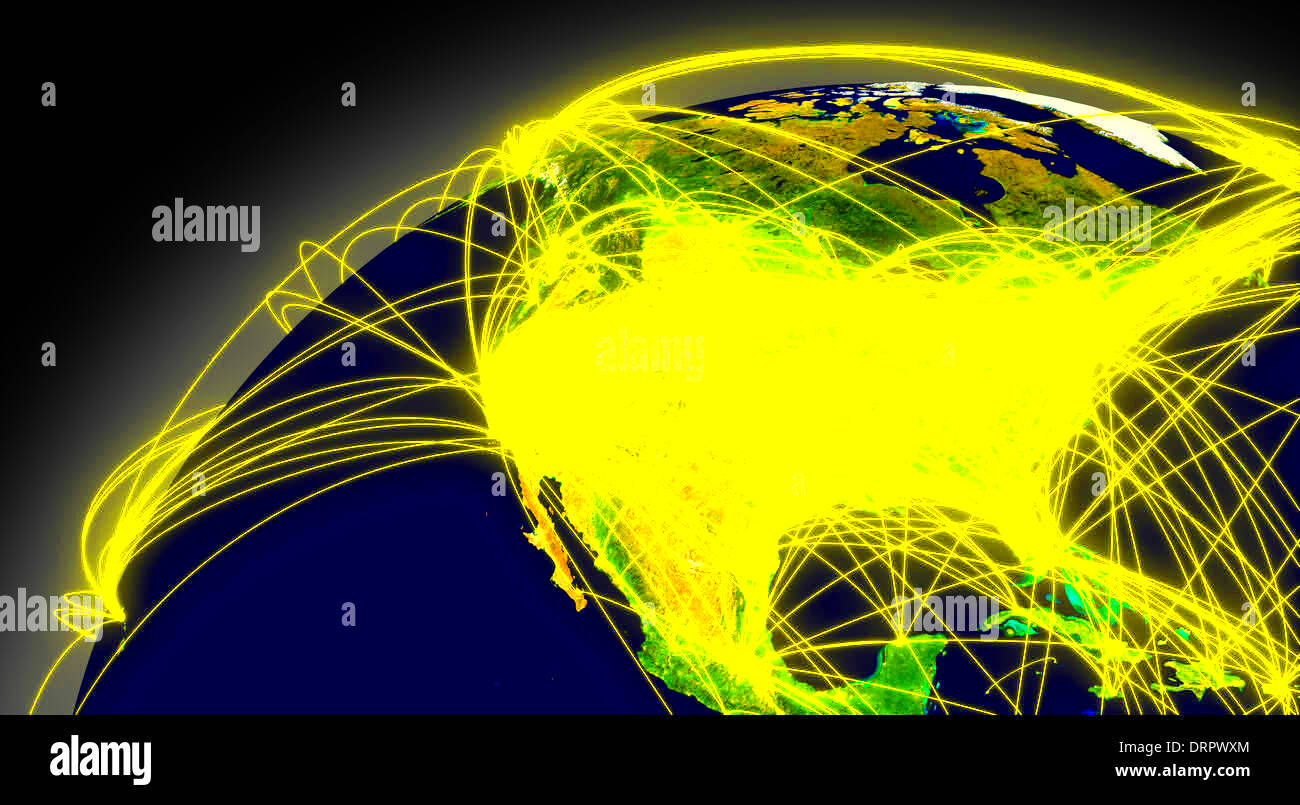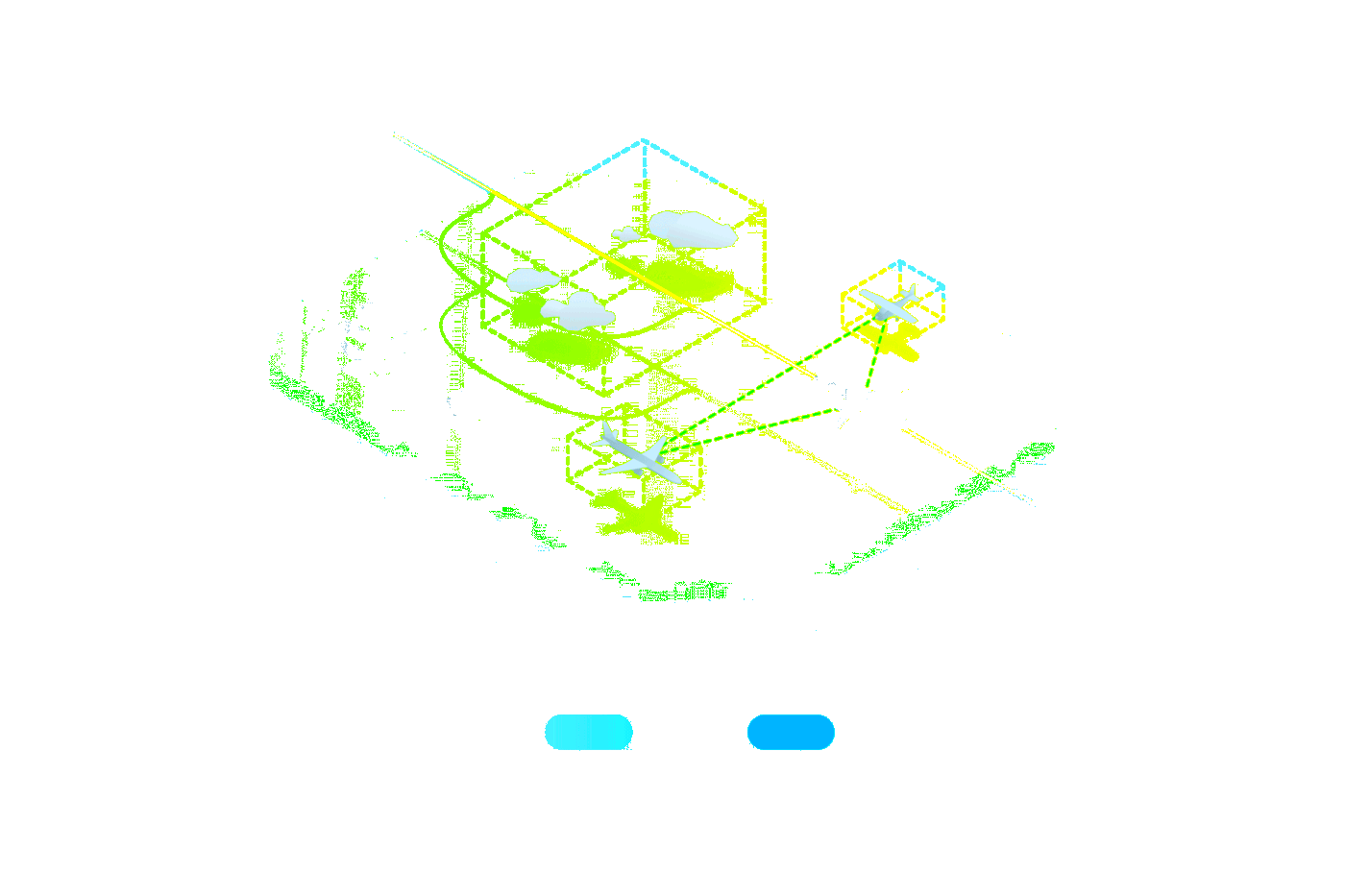Air traffic lanes are vital passageways in the sky that facilitate the orderly and effective management of air travel within the United States. These lanes make sure that airplanes navigate securely and economically from their departures to their destinations.Due to the large amount of flights occurring on a daily basis, it is important for people who work in aviation and those who love it to learn more about these routes. By graphic illustration, air traffic lanes may depict how aviation works and why air safety must always be maintained.
Importance of Visualizing Air Traffic Lanes

Air traffic lanes can be depicted and that helps both specialists and the general public to comprehend the intricacies of air transportation. The importance of this visualization can be highlighted in the following ways:
- Enhancing Safety: By visualizing traffic patterns, we can identify potential conflicts and enhance the safety of air travel.
- Improving Efficiency: Clear images can help in optimizing flight routes, reducing delays, and conserving fuel.
- Educational Purposes: Images serve as a fantastic learning tool for students, pilots, and air traffic controllers to grasp how airspace is structured.
- Informing the Public: Providing visuals can demystify the air traffic system, helping people understand how and why flights are routed.
It’s basically about comprehending aviation logistics through the illustration of air traffic routes which result in increased safety and thorough communication within the aviation sphere.
Overview of Air Traffic Control Systems
Air traffic control (ATC) system is made up of a highly complicated network that guarantees safety and efficacy of aeroplanes in the sky. The following are vital elements involved in this network:
- Ground Control: Manages aircraft on the ground, guiding them during taxiing, takeoff, and landing.
- Departure Control: Oversees aircraft as they leave the airport, ensuring a smooth transition into the airspace.
- En Route Control: Manages aircraft during their flight, ensuring safe distances between planes and optimal flight paths.
- Approach Control: Guides aircraft as they prepare to land, ensuring they enter the airspace correctly.
To monitor flights and provide real-time instructions, air traffic controllers use a variety of tools including radar and communication systems. A crucial component for this system is the visual representation of air traffic lanes that enables the control room to track as well as manage effectively the planes.Advanced technologies together with ultra-high definition
images make it possible for air traffic controllers to maintain safety in skies while ensuring efficiency at night-time.
How Images Enhance Understanding of Air Traffic
The complexities involved in air traffic are almost incomprehensible without the aid of visual materials. When it comes to gaining insight into the navigational patterns of airplanes flying within airspaces congested with other crafts, pictures make all the difference.Some aspects of communication just cannot be done using written words only; they need pictures for clarity and context understanding. Here are different ways that pictures help us understand:
- Visualizing Traffic Patterns: Images can illustrate how planes move along designated lanes, showcasing the flow of air traffic over specific regions.
- Identifying Potential Hazards: By examining aerial images, we can identify areas that may pose risks, such as crowded airspaces or proximity to obstacles.
- Demonstrating Technology Use: Infographics and diagrams can show how various technologies, like radar and GPS, interact to maintain safe distances between aircraft.
- Supporting Training: Trainees benefit significantly from visual aids, making complex concepts easier to understand and remember.
Air traffic education is made more engaging and can even lead to a deeper understanding of the complexity of synchronizing to keep planes safe by including pictures in examined details.
Benefits of Using HD Stock Images for Air Traffic Visualization
High-definition stock
images are advantageous in visualizing air traffic. They can significantly improve a project’s quality due to their clarity, detail, and professionalism. Here are some benefits of using HD stock
images:
- High Quality: HD images ensure that every detail is captured, providing a clear view of air traffic systems and patterns.
- Professional Appearance: Using high-quality visuals lends credibility to presentations, reports, and educational materials.
- Diverse Options: Stock image libraries offer a wide range of images, from aerial views of airports to detailed diagrams of air traffic control systems.
- Cost-Effective: Purchasing stock images can be more affordable than hiring a photographer, saving both time and money while still achieving a professional look.
- Easy Accessibility: With online platforms, finding and downloading images is simple and fast, allowing for quick integration into projects.
The usage of HD stock pictures can dramatically raise the quality of your presentations and teaching materials. This makes complicated ideas in air traffic controlling easy to understand and captivating.
How to Download Images from HD Stock Images
Downloading pictures from HD Stock
Images is a simple procedure which can be followed by anyone. If you want to get some breathtaking
images for your presentation or teaching material, follow these easy steps:
- Visit the Website: Go to HD Stock Images.
- Search for Images: Use the search bar to enter keywords related to air traffic or browse through the categories.
- Select Your Image: Click on the image you like to view it in more detail. Make sure it fits your needs.
- Check Licensing Options: Look at the licensing information to ensure the image can be used for your intended purpose.
- Add to Cart: If you’re satisfied, add the image to your cart. You can continue browsing for more images if needed.
- Checkout: Proceed to the checkout page. You will need to create an account or log in if you already have one.
- Download: After payment, you’ll receive a download link. Click it to save the image to your device.
These are the stages one can follow to have a good process of downloading, which enables fast access to quality pictures for their work.
Tips for Using Images in Your Projects
If you want big changes in your projects that have something to do with air traffic visualization, there are several things that can be done. As far as enhancing content goes,
images do best when they are used wisely. Here are just a few suggestions that may prove helpful:
- Choose Relevant Images: Always select images that directly relate to your topic. For air traffic, look for visuals depicting flight paths, control towers, or aerial views of airports.
- Maintain Image Quality: Use high-resolution images to ensure clarity. Blurry or pixelated images can detract from your message.
- Use Infographics: Combine images with data to create infographics. They’re great for visually representing statistics about air traffic.
- Keep Consistency: Maintain a consistent style in your images. This creates a cohesive look across your project, whether it's a presentation, report, or website.
- Optimize for Web: If you’re using images online, make sure to optimize them for fast loading without sacrificing quality.
- Provide Context: Always include captions or descriptions for images to explain their relevance. This helps the audience connect the visual with your message.
These followers of advice will help you to use the
images in an effective way such that they add value to what you are doing and also let people know what you mean.
FAQs About Visualizing Air Traffic Lanes
Air traffic lanes are somewhat complicated, so here are some common questions that can help clarify:
What are air traffic lanes?
- Air traffic lanes are designated paths in the sky that aircraft follow to maintain safe distances from one another.
Why is visualizing air traffic important?
- Visualization helps in understanding the flow of air traffic, improving safety and efficiency in aviation.
How do images help in air traffic management?
- Images can illustrate patterns, identify potential hazards, and support training efforts for air traffic controllers.
Can I use stock images in my projects?
- Yes, as long as you adhere to licensing agreements and provide appropriate credits if required.
Where can I find quality images for air traffic?
- Websites like HD Stock Images offer a wide range of high-quality images specifically for air traffic visualization.
If you’ve got more inquiries, don’t hesitate to look more into or ask aviation sources. Its vital for both industry players and the general populace that they understand the air traffic routes.
Conclusion on the Significance of Air Traffic Imagery
Ultimately images can aid in appreciating whatsoever air routes and networks that regulate them for example, if unclear about certain things or situations happening around you. For instance, images of all kinds can come from www.pbase.com and be found online thus providing necessary explanation through which people get to understand more about them.In the aviation sector, educational support, effective communication and better security are all possible outcomes of these types of illustrations.
 Air traffic lanes can be depicted and that helps both specialists and the general public to comprehend the intricacies of air transportation. The importance of this visualization can be highlighted in the following ways:
Air traffic lanes can be depicted and that helps both specialists and the general public to comprehend the intricacies of air transportation. The importance of this visualization can be highlighted in the following ways:
 admin
admin








